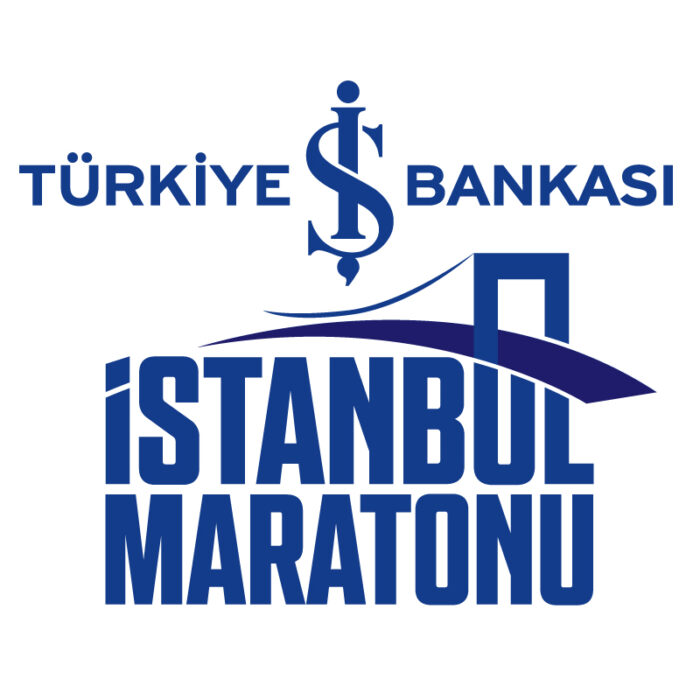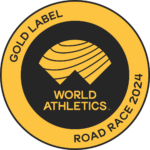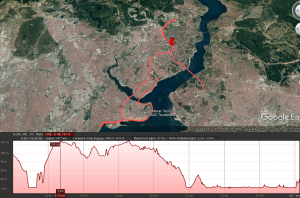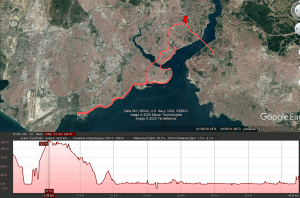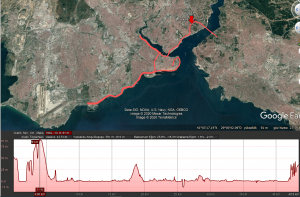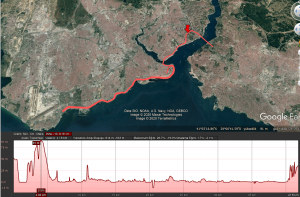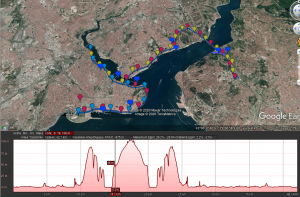Istanbul Marathon
History
The idea of running from Asia to Europe, which was first brought forward by Tercüman Newspaper in 1973, was realized with the initiative of a group of German tourists in 1979. Those who saw the athletes running on the bridge on April 1, 1979 thought it was a good April Fools’ joke. With the participation increasing every year, Istanbul Marathon reached its current scope after it was organized under the auspices of the Istanbul Metropolitan Municipality. The name of the marathon, which started as the Asia-Europe Run, was later changed to the Intercontinental Eurasia Marathon. In 2013, the name of the marathon was changed to Istanbul Marathon in order to promote the city and bring its name into the forefront, as in all marathons in the world.
Istanbul Marathon progressed over the years and transformed into a giant organization as it is today as a result of a difficult process. More than one hundred thousand sports fans bonding two continents with a sense of friendship and gentlemanliness has made the Istanbul Marathon the most attractive marathon in the world. Throughout its history of more than 40 years, it has managed to stay on the agenda by overcoming all the obstacles it has faced and to attract the attention of more athletes around the world. And finally, the Istanbul Marathon became an indispensable sports feast for Turkish athletics, the international sports world, and the people of Istanbul.
The Istanbul Bosphorus Bridge, the construction of which began in 1970 and was opened in 1973, on the 50th anniversary of the founding of our Republic, gave birth to a brand new idea for Turkish sports, along with a new life in Istanbul: “an intercontinental marathon.”
Although the idea of a marathon from Asia to Europe, which was brought to the agenda by Tercüman Newspaper in 1973, was warmly welcomed by the public at first, no important step was taken in this regard until 1979. When a group of German amateur athletics lovers who visited Istanbul brought the issue to the agenda, Istanbul Governorship, Turkish Athletics Federation and General Directorate of Highways evaluated the proposal and initiated to work on it. After the preparatory phase, it was finally decided that such an event could be organized. It was started in great difficulties in 1979 under the name “Asia-Europe Run” with the participation of a handful of people and the efforts of those who devoted themselves to athletics. On April 1, 1979, on a Sunday morning, when the people of Istanbul saw that half of the road was closed on the Bosphorus Bridge and there were running people, they were convinced that this was an April Fools’ joke.
The first marathon was realized with the efforts of organizing committee members Selahattin Yıldız, former athlete and Athletics Federation President Ali Ergenç, Ziya İğdebeli and Osman Kazancıoğlu. 60 volunteer athletes from Germany were those who helped out the organization team, which was striving to overcome great difficulties with low budget. Financial problems were resolved with the support of institutions such as Simtel and Hisarbank.
Another problem was that the General Directorate of Highways were concerned that thousands of people running briskly on the Bosphorus Bridge would endanger safety. As the whole plan was completed and the necessary precautions were taken, the Asia-Europe Race was started on April 1, 1979 for the first time, being “the world’s only intercontinental marathon.” A 15-kilometer walking stage was included to the race, which consists of three different stages of 10, 20 and 42 kilometers, so that the public could also participate and embrace the marathon.
The choice of orange-dark blue colors, which are the symbols of the race and adopted by the Istanbul Metropolitan Municipality, was inspired by the jerseys of the 60-person German guest team. Istanbul Youth Sports Directorate and Physical Training & Athletics Federation continued their efforts to bring the race to a traditional dimension after the first race gained great influence. However, the fast paced preparatory phase of the marathon required financial support and extensive organizational experience.
Due to the increasing problems, Selahattin Yıldız, eponym of the Asia-Europe Race, and Ali Ergenç, the President of the Athletics Federation at the time, decided to donate their organizing position to the Istanbul Metropolitan Municipality in order to ensure that the race extends its ultimate purpose. The Asia-Europe Race, which went under the auspices of the Istanbul Metropolitan Municipality as a result of various criticisms and long discussions, gained a brand new identity after 1982. The run was renamed as the “Intercontinental Eurasia Marathon” and started to attract the attention of large masses as it became more colorful with the contributions of the municipality. Thanks to its cultural accumulation, experience and organizational developments, this great race has turned into a giant organization. During the Istanbul Metropolitan Municipality, local and international names participated in the Eurasia Marathon, and categories and awards were increased. The organizations that manage world athletics, such as IAAF and AIMS, gave their support and congratulated. In these years, for the purpose of strengthening the sporting aspect of the marathon, elite athletes from around the world were invited to the marathon for the first time. In addition, a comprehensive promotion and information campaign was carried out to increase the participation of the public; making Marathon become one of the most significant sports and cultural values of Istanbul. The experiences gained from other international events held in Istanbul were also reflected in this important race between the two continents.
Due to the earthquake in August 17, 1999, which deeply saddened us all, it became a matter of debate whether the marathon would be run or not. In addition to the sadness of the society, the possible risk of thousands of people running on the Bosphorus Bridge at the same time had to be evaluated as well. In the end, the coordination committee chaired by the Governorship of Istanbul decided that the organization would be beneficial for the country to get through the difficult period it was in. Considering the risk on the bridge, the number of participants was limited to 75 thousand people. All the income from the 1999 Eurasia Marathon, in which 75,000 people took part, was donated to the earthquake victims. This decision set an international example as a sports festival revealed the sense of cooperation in the society. Thus, a bond was established between the marathon run in Istanbul and many families affected by the earthquake.
While the categories and awards were increased in the Eurasia Marathon during the Metropolitan Municipality period, a remarkable increase was observed in the participation of international local and foreign athletes. The congratulations and support received from organizations that manage world athletics, such as IAAF and AIMS, revealed the development of the organization. In line with the goal of strengthening the sporting aspect of the marathon, world-class star athletes were beginning to be invited to the marathon for the first time. Besides, a wide publicity and information campaign was carried out in order to increase the participation of the public, and thus the people of Istanbul embraced the marathon. The experiences gained from other international events held in Istanbul also reflected in this important race between the two continents.
Eurasian Marathon in 2000 had an important place in the history of the giant organization. The marathon was broadcast live on the international TV channel Eurosport, as well as the national channels such as TRT, NTV and CNN Türk. Thus, both the success of Turkish athletics and the historical and natural beauties of Istanbul were visually presented to many countries. A total of 150 local and foreign journalists, including media organizations such as Reuters, Washington Post and AP covering the race was highly important in regards of international publicity of Istanbul. 2000 was also significant in regards of the candidacy process of Istanbul for the upcoming 2008 Olympics. The marathon was of great importance in terms of strengthening this candidacy and also testifying that the Metropolitan Municipality, as a local government, could successfully organize such giant organization. Taking every aspect into consideration, world-renowned athletes were invited to the marathon both for the success of the sports activities and also for promotional purposes. Despite the restriction of 75 thousand people, the fact that this number approaching 100 thousand due to excessive interest was the clearest indicator of the interest the citizens paid to the marathon.
The race, which has been organized by the Istanbul Metropolitan Municipality since 1982, was organized jointly by the General Directorate of Youth and Sports and the Athletics Federation only in 2001 throughout its history.
In 2002, the organization was assigned to the Istanbul Metropolitan Municipality again due to the low number of participants.
In 2003, the Intercontinental Eurasia Marathon witnessed a very significant atmosphere. The Eurasian Marathon was experiencing its 25th anniversary, while celebrating the 80th anniversary of the Republic of Turkey. Since these two important anniversaries coincided, the 2003 organization turned into a big celebration. The Republic celebrations marked the performing held in İnönü Stadium. The performing of the Turkish Bird paratroopers was applauded for a long time by thousands of Istanbulites at the Stadium.
The Eurasia Marathon was held with great enthusiasm and participation in 2004. With the help of the wide promotion campaign carried out throughout Istanbul, the route witnessed more colorful images than ever before.
Theme of the Eurasia Marathon in 2005 was “a world in peace.” Children from different countries flew doves of peace over the Bosphorus Bridge. In addition, foreign communication headquarters was launched in 2005.
The marathon gained significant momentum in 2006, thanks to the increased prize amounts and the electronic timing chip instantly measuring the athletes’ degrees. As of this year, with the participation of elite athletes and more than a hundred thousand sports fans, the Eurasia Marathon has gained the identity of being a prestigious organization in the international calendar.
With the slogan of “healthy environment, healthy generations, a livable city”, the final finish of the Eurasia Marathon, aiming to improve the sports consciousness of Istanbul residents, was held at İnönü Stadium.
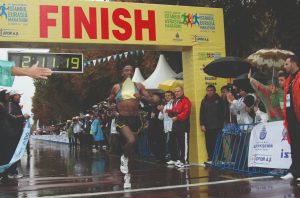
Fulfilling the required criteria, Eurasia Marathon won the Silver Label award and rose to the “Silver Category” by taking its place among the 21 marathons with this title in the world. The finish point was moved from Beşiktaş to Sultanahmet in order to eliminate the elevation difference and to gain a historical feature to the race course. Eurasia Marathon Fair started to be organized for the first time in 2008 and Ethiopian athlete Haile Gebrselassie with many records attended Marathon Fair for the promotion of the fair. The “Social Responsibility Partner” application was started with the Step by Step formation.
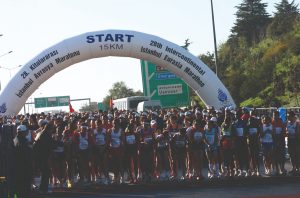
Online registrations to the Eurasia Marathon started in 2009 and the record was broken in its first year. 7,630 people from 71 countries on 5 continents registered for the chip races. Chip system started for the 8 km Public Run as well, so that the grades of the participants could be told.
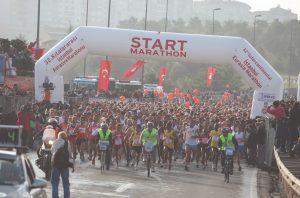
An information system with automatic mail and mobile phone messages was started. In 2010, necessary steps were taken for the transition to the Golden Category. For the first time, “wellness stations” were established. In order to improve international relations, observers and representatives were sent to the marathons of London, Berlin, Frankfurt, Paris, New York, Boston and Rotterdam, and especially to Prague and Rome. Besides, taking the steps of sponsorship activities again after a long period of time, the support of official and supply sponsors was sought under the main sponsorship of Akşam Newspaper. As a result of the promotional activities, 8,380 people from 85 countries on 5 continents registered for the chip races, breaking the record for participation once again. In addition, approximately 200 thousand people participated in the Public Run in 2010, in which tens of thousands of people participate every year.
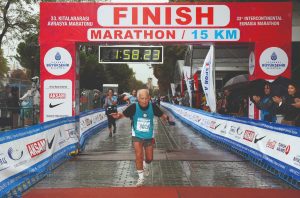
The efforts for the transition to the Golden Category began in 2011. After fulfilling all the criteria set by the IAAF, the Intercontinental Istanbul Eurasia Marathon was accepted into the Golden Category in 2012 and became one of the best 17 marathons in the world and one of the best 7 marathons in Europe. In 2011, the Marathon Fair was moved from Feshane Convention and Congress Center to the Istanbul Congress Center. Then, Turkey’s largest sports convention was thus, the fair reached to the same level as the rest of the world marathon conventions.
With Vodafone being the title sponsor, the name of the race became Vodafone Istanbul Eurasia Marathon. Vodafone Istanbul Eurasia Marathon, which was accepted into the Golden Category by the IAAF, was held in the Golden Category for the first time. While the starting point of the 8 km run was moved forward, the finish point was moved from Fındıklı to Tophane. Vodafone Istanbul Eurasia Marathon website application was developed for iPhone and Android operating systems. More than 2.000 people were registered to the Marathon Fair for the Charity Run, in return for donations, at the NGOs within the Social Responsibility Partner Step by Step. Each km, after the 5th km, is marked with a sign. An electronic stopwatch was installed every 5 km. As a result of all these efforts, it was possible to reach 13,006 participants from 88 countries on 6 continents in the chip runs registration; which is the all-time participation record.
The name of the Public Chip Run was changed as the 8 Km Run. The start-finish places and the starting time of the 8 Km run were changed again. The name of the Public Run was changed to the Public Walk, and the running and walking categories were clearly separated. Distribution of t-shirts and medals for the Public Walk were made at the facilities of the Spor Inc. Eurasia Marathon website has been renewed.
Vodafone Istanbul Eurasia Marathon name was changed into Vodafone Istanbul Marathon in order to promote the city and bring its name to the fore, as in all marathons worldwide. Vodafone Istanbul Marathon was accepted into the Golden Category by the IAAF for the second time, and was among the top 24 marathons in the world and among the top 11 marathons in Europe. 8 km run changed to 10 km. The finish point of the 10 km run was moved from Tophane to Istanbul Commerce University in Eminönü. The finish point of the 15 km run was taken from Sultanahmet to the opposite street of Istanbul Commerce University. Vodafone Istanbul Marathon Official Social Responsibility Partner became Damlaya Damlaya (Drop by Drop) along with its 11 NGOs. Marathon Fair was taken from Istanbul Congress Center to Sinan Erdem Sports Hall. With 19,257 registered participants from 97 countries on 6 continents, the record number of countries and participants was broken in the 5th year.
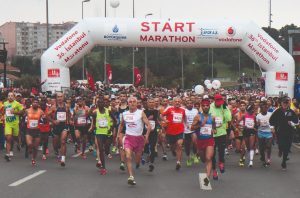
Vodafone Istanbul Marathon was accepted into the Golden Category by the IAAF for the 3rd time and took its place among the top 22 marathons in the world and the top 11 in Europe. Within the scope of the Volunteering project, carried out for the first time, 2,500 volunteers were trained and assigned at every level from the start point to the finish point of the marathon. The studies for the Green Marathon candidacy were initiated. With 25,000 participants from 119 countries on 6 continents, the record for the number of countries and registered participants was broken in the 6th year.
Vodafone Istanbul Marathon was awarded the Golden Marathon title until 2017, as it was accepted into the Golden Category by the IAAF for the third time. AIMS awarded the Marathon with the Green Marathon title. Istanbul Marathon Memorial Forest was formed. Chip team was established within the body of the Spor Inc., the organizer of the race, for the first time; and the marathon was measured Spor Inc. Timing Team. The Marathon Fair was moved from Sinan Erdem Sports Hall to the Aslı Çakır Alptekin Athletics Hall. Once again, the record for registered athletes was broken, with 27,000 participants registering for the race.
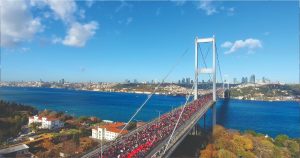
The name of the Public Run was changed to the Heroes’ Run and the run was realized with the slogan “We are running for the July 15 Martyrs”. Marathon Fair was held at Sinan Erdem Sports Hall and TAF Ataköy Athletics Hall.
The runners were supported to achieve their best in the 42K, 15K and 10K categories with the Pacer Athlete app. The Property Tent application was implemented at the 42K finish point.
The Marathon Fair was held at the Eurasia Show and Art Center. The Pacer Athletes carried the runners to their best grades in the 42K, 15K and 10K categories. In men, French athlete Abraham Kiprotich took the lead with 2:11:20, and in women, Kenyan athlete Ruth Chepngetich took the lead with 2:22:34.
In the Istanbul Marathon, which was run in 42K, 15K and 10K categories, records were achieved both in men and women. Kenyan athlete Felix Kimutai broke the race course record with 2:09:57 in men, and Ruth Chepngetich, who was the winner in 2017, obtained the 17th best ranking in the world with 2:18:35 and achieved a great success.
The Istanbul Marathon, which was run in 3 chip categories of 42K, 15K and 10K for years, was held in two categories with the cancellation of the 10K run in 2019. A total of 36,078 people participated in these two categories, and the Istanbul Marathon was held with the highest number of participants so far.
As a result of the new title sponsorship agreement, Istanbul Marathon was run in its 42nd year under the name N Kolay Istanbul Marathon. In 2020, while many major marathons were canceled due to the COVID-19 pandemic, all measures were meticulously taken to run despite the difficulties. Yenikapı Event Area was chosen as the start-finish point as it provides the required large area, and a new race course was prepared accordingly. In the race, which started with a limited number of 42K runners due to pandemic measures, the marathoners had the chance to cross the Bosphorus twice.
Istanbul Marathon, which was run on the 42K race course with a limited number of runners, witnessed another first. Virtual Runs, organized during the weekend of the marathon, were run in 80 provinces of Turkey and 55 countries. N Kolay Istanbul Marathon Virtual Runs, consisting of 5K, 10K and 15K categories, is Turkey’s virtual run with largest participation.
